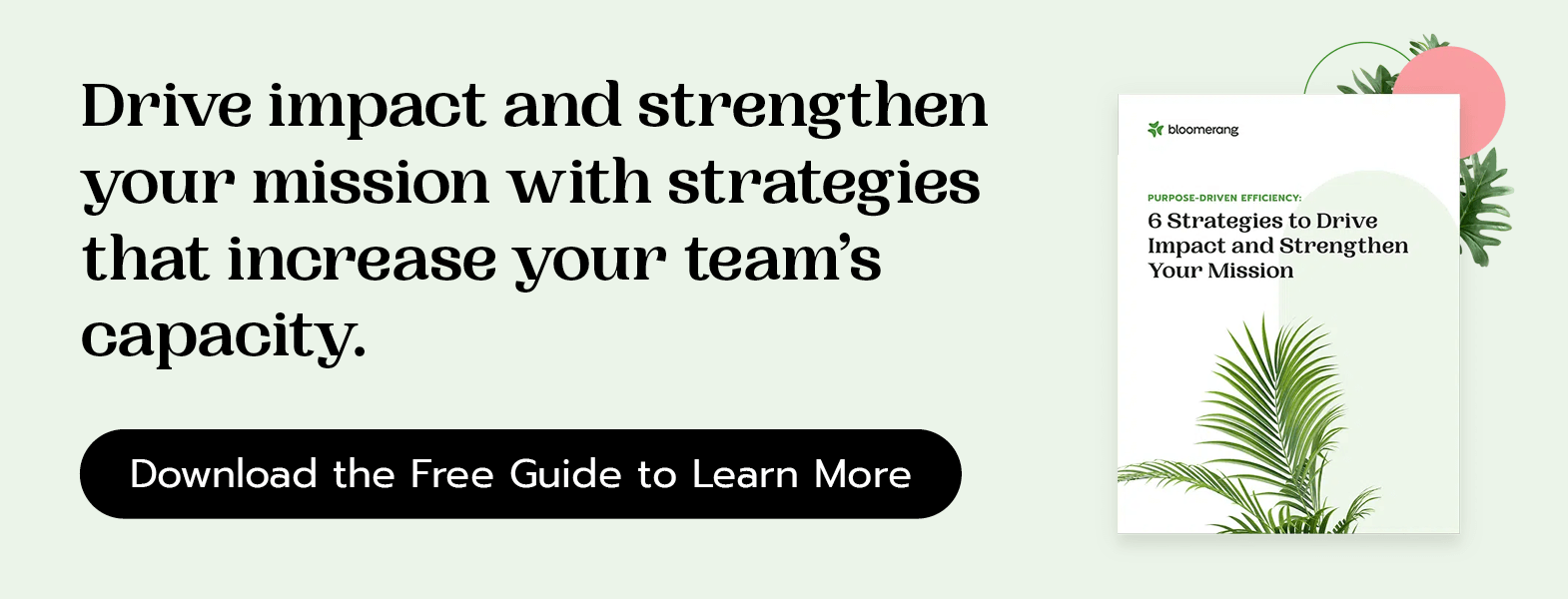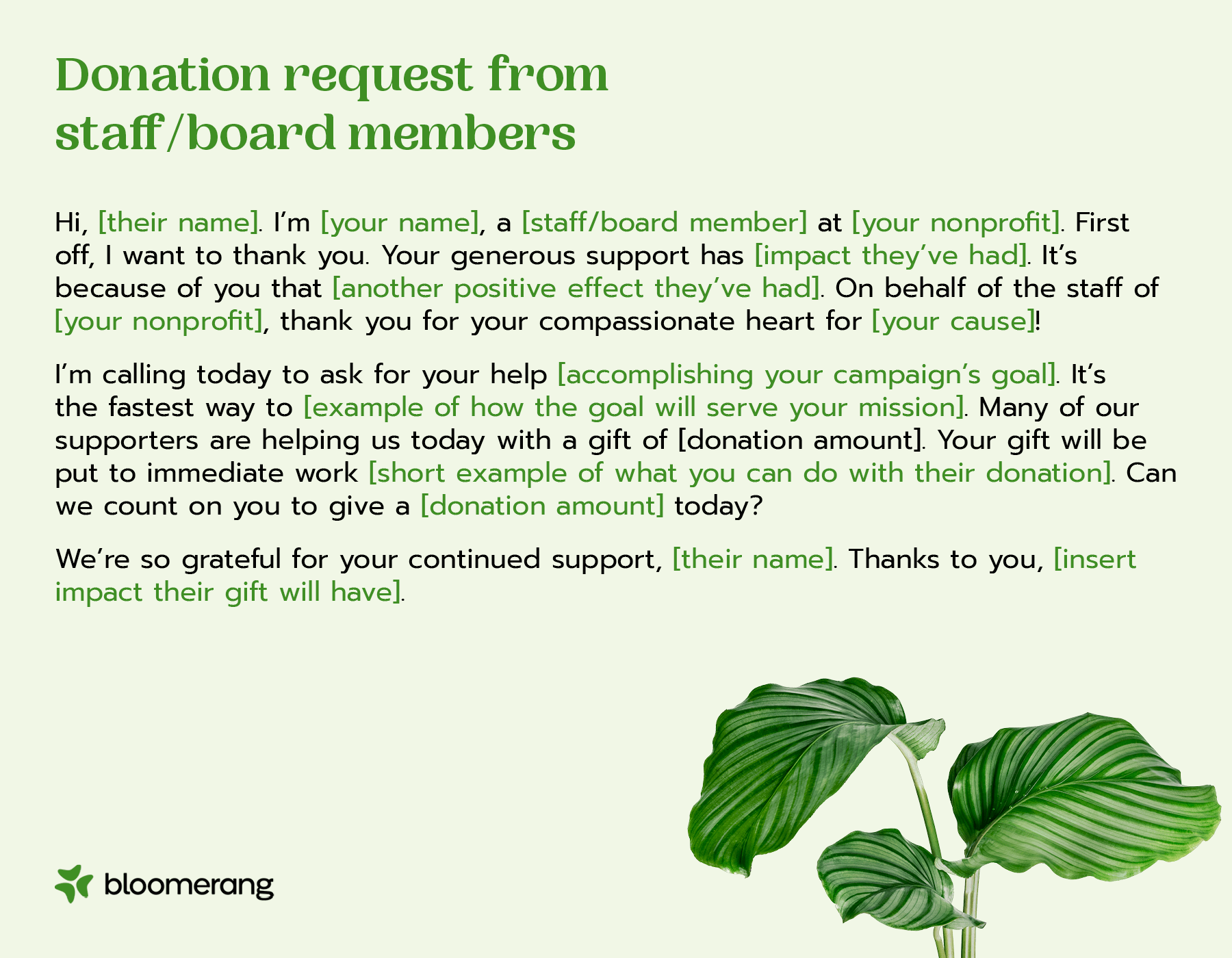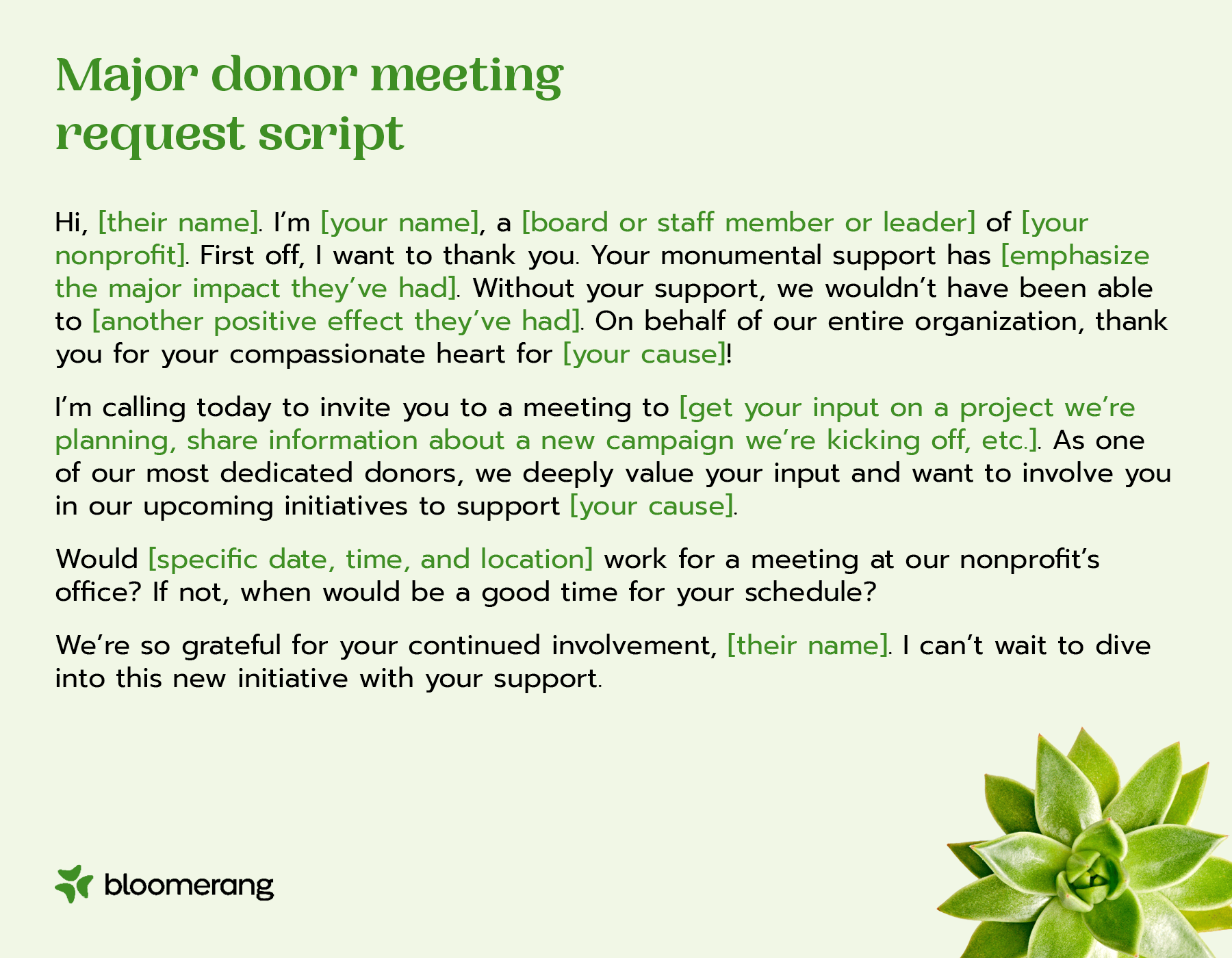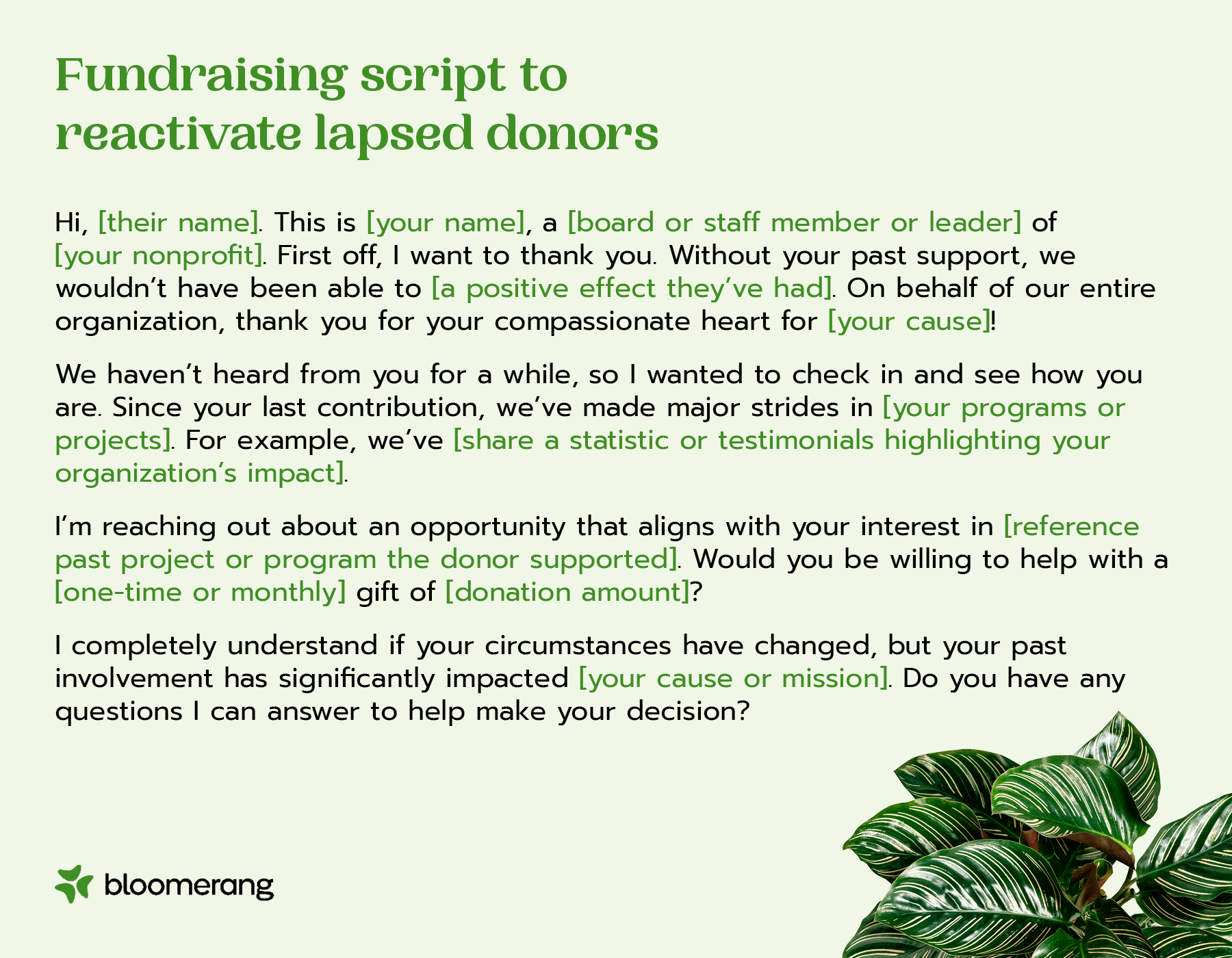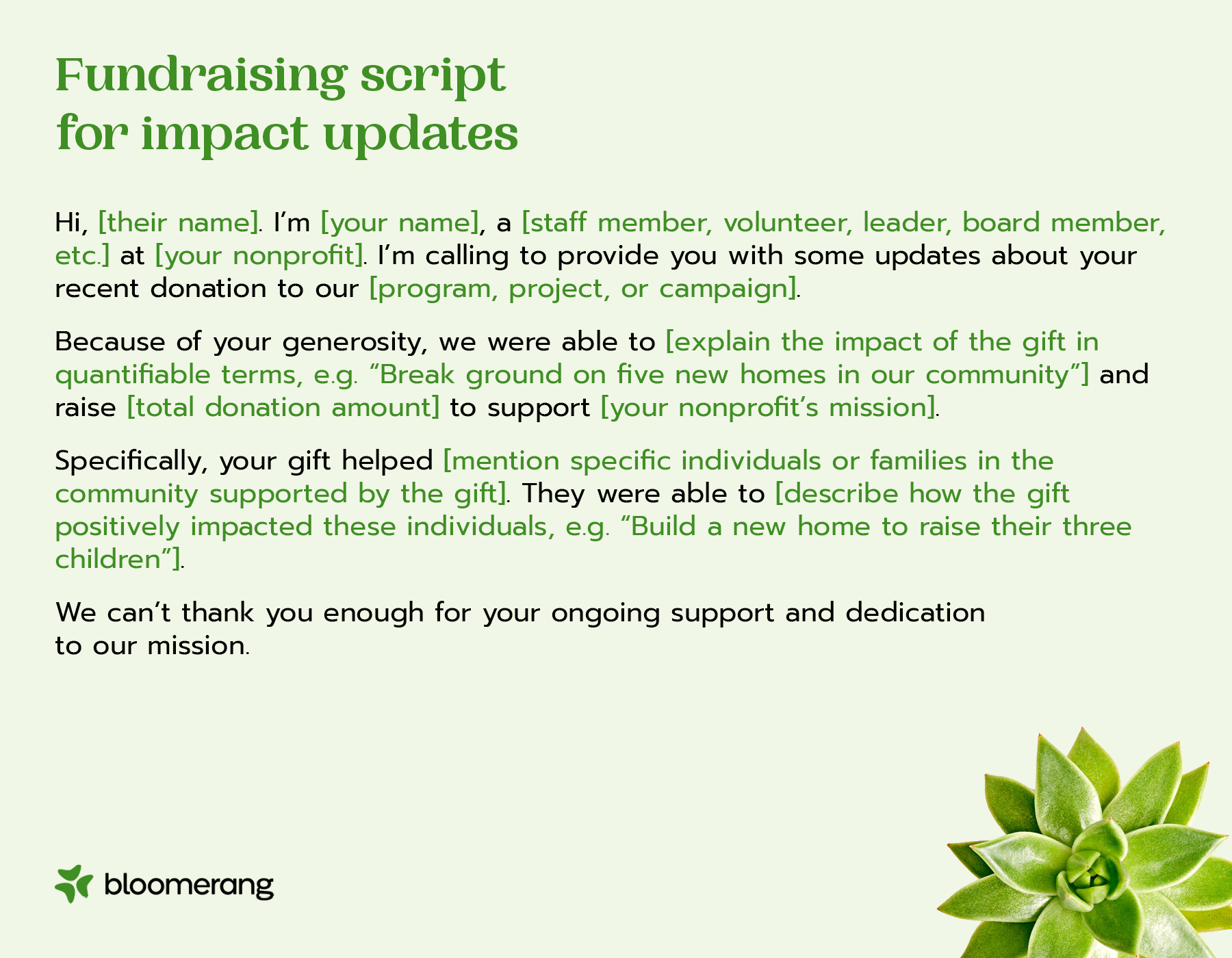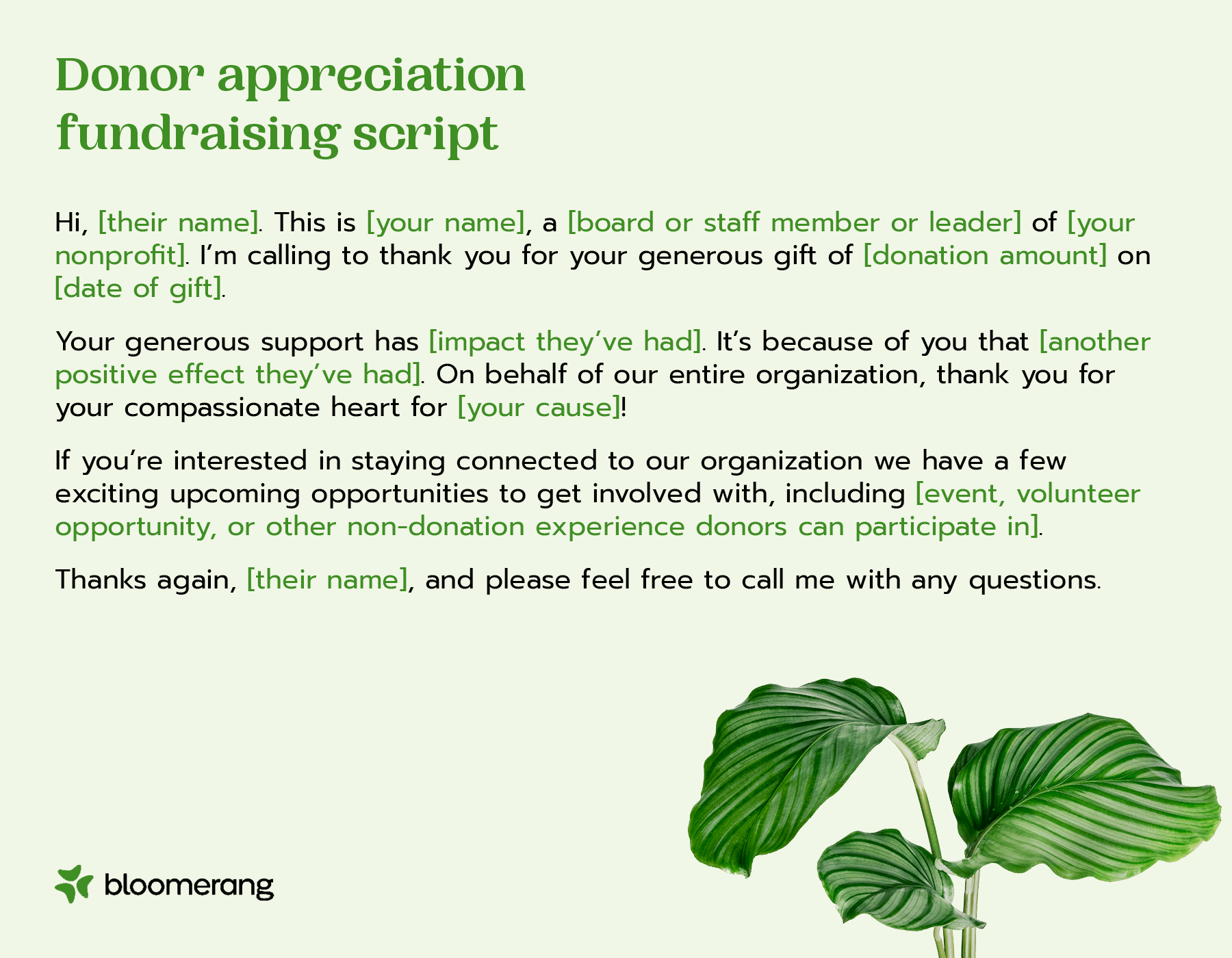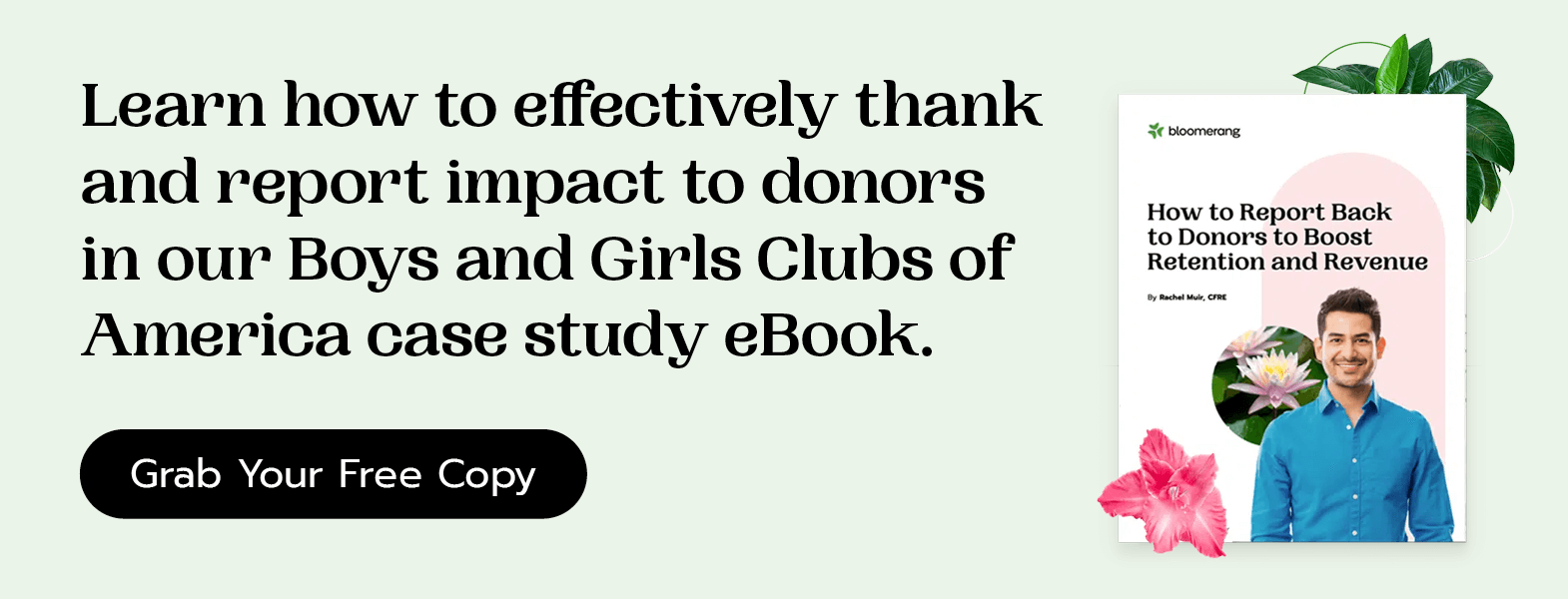Making fundraising calls can be nerve-wracking, but they can actually help boost your nonprofit’s donor engagement and retention efforts significantly.
Bloomerang’s research found that retention rates increased to 41% when donors received one phone call after they gave, compared to 33% for donors who did not receive a phone call. Donors who received more than one phone call from the nonprofit were retained 58% of the time.
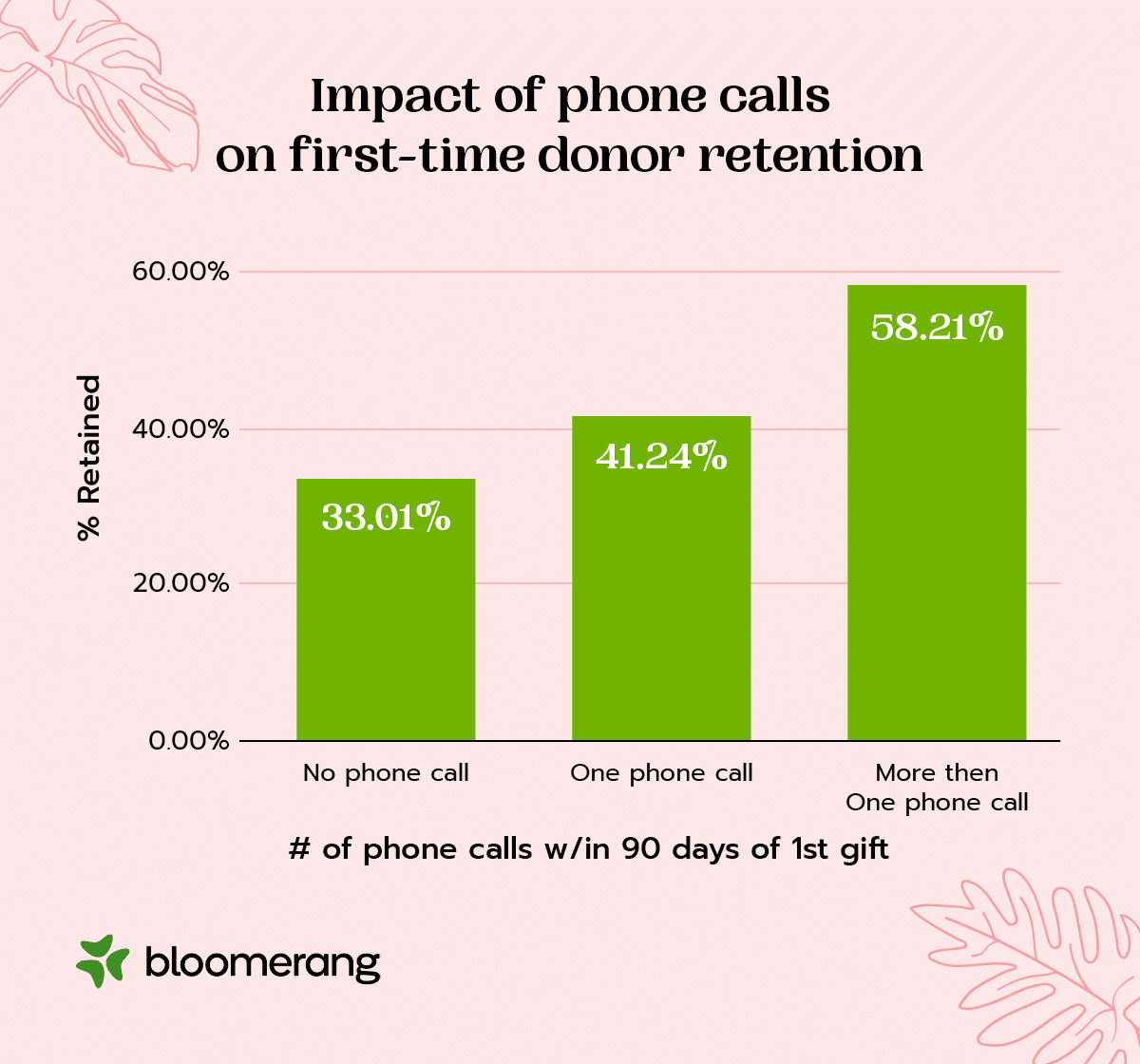
To ease your nerves and ensure more successful fundraising outreach, it helps to have a plan in the form of a fundraising script. In this guide, we’ll offer some tips and sample scripts you can use when calling donors to request a face-to-face meeting or directly request donations. We’ll explore:
- What is a fundraising script, and when should you use one?
- What makes a good fundraising script?
- How to write a fundraising script
- 5 example fundraising scripts to use
- How to handle donor objections to your ask
- Quick tips to make the most of your fundraising calls
- How Bloomerang supports successful fundraising requests
What is a fundraising script, and why should you use one?
When thinking about how to ask for donations, it’s natural to wonder:
- What should I say?
- How should I ask?
- What if I flub the whole thing?
- What if they say no?
A fundraising script provides a few handy talking points to guide the conversation in a positive, productive direction and help you prepare for how the person you’re calling might react to your request.
A script can also help you calm your nerves and make the ask with confidence and poise. Plus, scripts are necessary when training people who have never asked for gifts. You can use these scripts in a variety of scenarios by offering them to:
- Volunteers during a fundraising call bank event
- Board members who may be making fundraising calls on your behalf
- Staff members who feel they need more guidance when reaching out to potential donors
What makes a good fundraising script?
- It’s conversational. Your scripts should sound like what you would say in a normal conversation. The donor shouldn’t feel like you are delivering a speech or monologue. Come to the meeting with a clear plan, research the donor and their interests, and prepare a simple ask.
- It encourages the recipient to chat. Your conversation should primarily focus on the prospective or current donor. Your script sets you up for a two-way dialogue that includes you asking the donor questions, natural pauses for your donors to reply, heartfelt appreciation and affirmation for the donor’s prior support and willingness to talk, and the ask.
How to write a fundraising script
1. Start by introducing yourself and reflecting on the donor’s impact.
Form a personal connection with the donor by introducing yourself if you haven’t communicated with them before. If you’ve previously connected with the donor, remind them of your last meeting and ask any follow-up questions related to your conversation.
Example: “Hi, [their name]. I’m [your full name], and I’m the [title] at [your nonprofit]. First off, I want to thank you. Your generous support has [impact they’ve had]. It’s because of you that [another positive effect they’ve had]. We’re so grateful to you!”
Example: “Hi, [their name]. This is [your full name]. It was great seeing you at the [event, meeting, volunteer opportunity, or other experience where you connected with the donor] and chatting about [conversation topics from that event].”
2. Perfect your fundraising script opening line
One of the most common mistakes fundraisers make is asking for donations by saying, “I have some exciting updates for you.” Let’s face it: Listening to “exciting updates” sounds about as enticing as watching paint dry. Instead, try any of these:
- “I want your input on a project we’re planning.”
- “We want to get your take on something.”
- “We’re trying to figure out a way to do XYZ. I’d love your input!”
- “Every donor has a story to tell about their connection to _____ (name the organization, institution, or mission). I’d love to hear yours.”
- “I want to personally thank you for your previous support and share something new that I think you’ll be interested in hearing!”
- “My job is to get to know our loyal supporters so I can share the impact you’re making. I’d love to share that impact with you and learn more about your interests.”
2. Make the ask.
Don’t beat around the bush—after greeting the donor and reflecting on their kindness, make your fundraising ask as clearly and concisely as possible to respect the donor’s time.
Example: “[Their name], the reason I’m calling today is to ask for your help [accomplishing your campaign’s goal]. It’s the fastest way to [example of how the goal will serve your mission]. Many of our supporters are helping us today with a [monthly] contribution of [donation amount]. By making this [monthly] gift, you’ll be [an example of what your nonprofit can do with their donation]. Can we count on you to help with a [one-time or monthly] gift of [donation amount]?”
3. Express your gratitude again.
Whether or not donors agree to your request, show gratitude for their time and attention.
Example: “We’re so grateful for your continued support, [their name].Thanks to you, [insert impact their gift will have].”
4. Leave a message.
If you don’t get the person on the phone, leave a message with your callback number and send a follow-up email inviting them to give.
If your goal is to get a visit from or meet with a prospective donor, remember that you might have to talk with them multiple times to convince them to meet with you! You can use alternate channels by calling them, emailing them, texting them, sending them a video message via email, or sending a message on LinkedIn.
And remember: Donors may not give over the phone—but that doesn’t mean they won’t give at all. Some donations will result from your follow-up efforts. Prepare your next steps ahead of time, including sending an appeal, asking for a face-to-face visit, sharing a testimonial from a community member you’ve helped, or inviting them to an event.
Example: “Hi [their name]. My name is [your full name], and I’m a [staff member, board member, volunteer, etc.] for [nonprofit]. I’m calling to thank you for your previous support and to invite you to participate in a new special campaign. If you’re interested in helping us [short description of the campaign’s goal], please call me back at [ phone number]. That’s [phone number]. Thank you, and have a great day!”
5 example fundraising scripts to use
Donation request from staff/board members
Major donor meeting request script
Fundraising script to reactivate lapsed donors
Fundraising script for impact updates
Donor appreciation fundraising script
How to handle donor objections to your ask
Your supporter may not make a donation when you call. Below is a list of sample objections you might hear and a few ways you can handle them.
OBJECTION: “I can’t afford the amount you want.”
RESPONSE: “I completely understand. Any amount would help us [short reminder of the goal]. The amount is completely up to you.”
OBJECTION: “I gave because of your work on _____, but I don’t like the position you’ve taken on ________.”
RESPONSE: “I appreciate your honesty. If you have time, I’d love to hear more about your concerns.”
OBJECTION: “We’re in a tight situation financially, and we don’t have the money.”
RESPONSE: “I completely understand. There are other ways to get involved in our mission that don’t include making a financial contribution. Would you like to hear about those?
Quick tips to make the most of your fundraising calls
- Don’t ask donors if they have time to talk. Most people will probably say no, so you’re better off getting right to the purpose of the call.
- Get to the point as quickly as possible. Respect the donor’s time by keeping the conversation short and sweet.
- Let your personality shine through. Adapt these scripts to your unique personality. If you have a fun sense of humor, crack a joke or two. If you share an interest or a personal connection with the donor, talk about that before diving into your request. Your phone calls should sound like they’re coming from a real person—not a robot!
- Take notes. Write down what the donor says so you can later add that information to their donor database profile. These insights allow your organization to create personalized follow-up communications and provide a sense of consistency across your donor outreach.
- Make phone calls just focused on appreciation after donors give. We included an appreciation script above for a reason—you should use it frequently! Follow up within a week or two of the donor’s gift to thank them for their contribution and let them know the specific impact of their donation.
How Bloomerang supports successful fundraising requests
Bloomerang is a fundraising and donor management system built to help nonprofits increase fundraising through tailored asks and robust donor engagement efforts.
Bloomerang’s donor database and fundraising solutions offer multiple features to help you make better fundraising requests and engage donors on a deeper level:
- Track donor information with detailed profiles and supporter timelines.
- Segment donors for targeted communications.
- Use the Engagement Meter to get an at-a-glance view of every donor’s engagement level.
- Host in-person and virtual events to foster donor engagement.
- Streamline email and text communication with integrated tools.
- Offer self-serve donor portals for supporters to update their information, download receipts, upgrade their giving amounts, etc.
Check out our customer case studies to hear from organizations of all types that successfully use Bloomerang to raise more money and grow their missions.
Wrapping up
Your fundraising calls are a critical part of your overall donor stewardship strategy. When you take a strategic, personalized approach to setting up meetings and asking for donations, you can meet donors where they are using an appeal that resonates with them. This helps lay the groundwork for better donor relationships for years to come.
Have a favorite strategy to secure a visit or respond to an objection? Drop it in the comments!
Want more help making the ask? Check out these other free resources from Bloomerang for guidance:
- Major Gifts 101: What You Need to Know to Raise More. To maximize major gift potential, major gift fundraising requires carefully planned fundraising scripts and strategies. Use this guide to build your major gift program.
- How to Choose Donor Management Software + 9 Top Options. Personalizing your fundraising scripts requires knowing details about your donors, including their giving history. This article includes top donor management solutions to help improve your donor data-gathering process.
- How to Upgrade Nonprofit Donors Using Suggested Donations. You can maximize donor gifts by incorporating suggested donation amounts into your fundraising script. Learn how to choose the right donation suggestions using this guide.
Cultivate better outcomes by building deeper connections.
Send beautiful personalized emails, letters and mailings, acknowledgements, and surveys to build relationships that last a lifetime.
The post Fundraising Scripts: Best Examples to Earn More Donations appeared first on Bloomerang.



